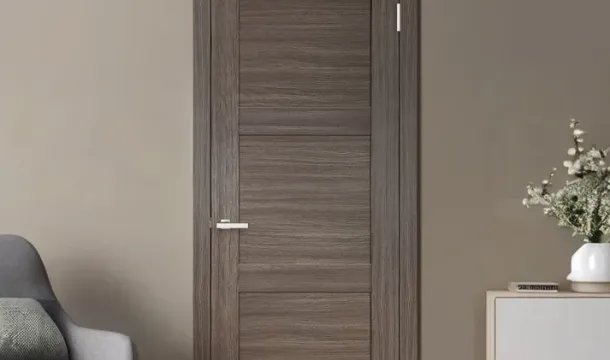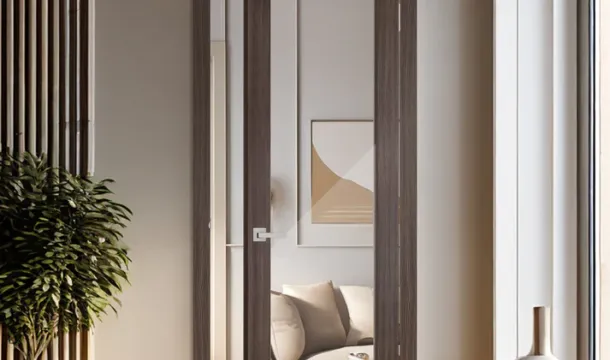Key Features of Doors for Home Offices and Study Rooms
Popular Articles
Choosing the right door for a home office or study room requires prioritizing sound insulation, privacy, and space efficiency. Solid core doors with high-density cores reduce noise transmission by up to 40%, creating a quieter environment essential for concentration and video calls. Incorporating weatherstripping and quality seals further enhances acoustic performance.
Space-saving designs such as sliding or pocket doors optimize limited room layouts without compromising accessibility. For rooms with restricted swing clearance, these options prevent obstruction while maintaining clean aesthetics. Additionally, frosted glass panels can balance natural light flow and privacy, crucial in shared living spaces.
Durability and finish also impact functionality. Doors constructed from engineered wood or composite materials resist warping in fluctuating humidity common in Canadian climates. Finishes with anti-fingerprint coatings reduce maintenance frequency in high-traffic areas. Locking mechanisms tailored to secure sensitive workspaces add an extra layer of protection without sacrificing style.
Soundproofing Options Comparison
Solid core doors provide superior sound reduction compared to hollow core models, typically offering a Sound Transmission Class (STC) rating between 30 and 40. Their dense construction blocks airborne noise effectively, making them a reliable choice for home offices and study rooms.
Acoustic doors designed specifically for soundproofing can reach STC ratings above 45. These often incorporate multiple layers of composite materials, seals, and special cores that absorb and block sound waves more efficiently than standard doors.
Door seals and sweeps enhance any door's performance by closing gaps where sound escapes. High-quality perimeter seals and automatic door bottoms reduce noise infiltration by up to 15 decibels without replacing the door itself.
Glass panel doors with double or laminated glass offer moderate sound insulation but generally fall short of solid doors unless combined with acoustic seals and thicker glazing. For transparency needs, opt for acoustic-rated glass to maintain privacy without sacrificing quiet.
Mass-loaded vinyl (MLV) applied within door cavities or around frames adds mass that significantly dampens noise transmission. This solution is practical when retrofitting existing doors without full replacement.
The best results come from combining a solid core or acoustic door with professional-grade seals and thresholds. In contrast, hollow core options provide minimal sound reduction, often inadequate for focused work environments requiring minimal distractions.
Privacy Locks and Security
For home offices and study rooms, installing privacy locks with reliable security features is critical to maintain confidentiality without compromising convenience. Lever-style privacy locks with a thumb turn on the inside and emergency release on the outside offer a balance between easy access and secure closure, preventing accidental interruptions while allowing quick entry in emergencies.
Consider deadbolt mechanisms rated ANSI Grade 2 or higher for enhanced protection against forced entry. While common in exterior doors, these locks can be adapted for interior office doors where sensitive documents or expensive equipment are stored. Combining a deadbolt with a privacy latch increases both physical security and user control.
Smart Lock Integration
Smart locks provide programmable access codes and activity logs, useful for managing who enters your workspace throughout the day. Select models compatible with Wi-Fi or Bluetooth protocols allow remote locking/unlocking via smartphone apps, enabling control even when away from home. Choose smart privacy locks that support manual override to prevent lockouts during power failures.
Material and Installation Tips
Lock durability depends largely on door material and frame reinforcement. Solid wood or metal frames enhance lock performance by reducing warping or forced entry risks. Reinforce strike plates with long screws (at least 3 inches) anchored into the wall studs to resist kick-ins. Avoid plastic components in locksets; metal alloys like brass or stainless steel ensure longevity under frequent use.
For noise-sensitive environments, select locks designed with minimal rattling mechanisms to avoid distractions during calls or focused work sessions. Proper alignment of the door and frame reduces wear on locking components, extending their service life.
Space-Saving Door Designs
Sliding doors are the most efficient solution for compact home offices and study rooms, eliminating the need for door swing clearance. Opt for barn-style sliding doors mounted on top rails to maximize floor space while adding a modern touch. Pocket doors, which slide into the wall cavity, offer an even more discreet option by completely disappearing when open, preserving every inch of usable area.
Bi-fold doors provide versatility in tight spaces where full-width openings are required but traditional swinging doors would be obstructive. They fold neatly to one side, requiring only minimal clearance. For very small rooms or closets adjacent to workspaces, accordion doors combine lightness with compact folding action, though sound isolation is typically lower compared to other designs.
Material and Mechanism Considerations
Lightweight materials like aluminum frames with tempered glass panels reduce operational effort and wear on sliding mechanisms. Soft-close hardware prolongs lifespan and ensures quiet operation, crucial for maintaining concentration in work environments. Track systems embedded flush with floors or ceilings prevent tripping hazards and contribute to a streamlined look.
Practical Applications and Customization
Custom-sized space-saving doors allow fitting non-standard openings common in renovated basements or converted attics used as offices. Incorporating frosted or tinted glass panels in sliding or bi-fold styles maintains natural light flow without compromising privacy. Combining these designs with minimalist handles or recessed pulls enhances both ergonomics and aesthetics.
Popular Articles

Soundproofing Interior Doors: Which Options Are Best for Your Home?

Choosing the Perfect Interior Doors for Your Canadian Home
